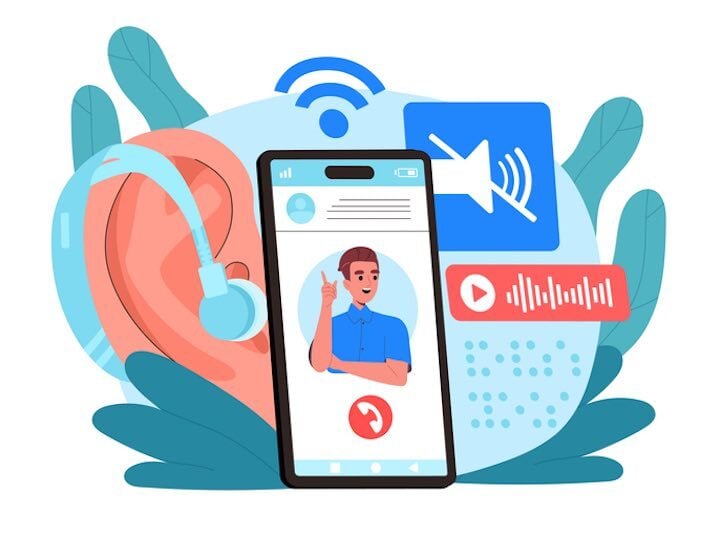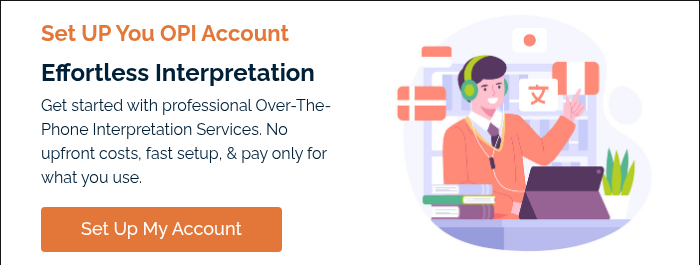5 Tips For Selecting the Right On-Site Interpretation Equipment

If you’ve ever attended a multilingual conference, business meeting, or international event, you know how vital smooth interpretation is. The right equipment ensures that every participant, no matter their language, feels included and informed.
As a Language Service Provider (LSP), we guide a lot of clients through this process. We know that with so many options available, such as headsets, transmitters, receivers, and consoles, it can feel overwhelming to figure out what’s best for your needs.
But don’t worry, selecting interpretation equipment doesn’t have to be complicated. With a few practical considerations in mind, you can make confident choices that ensure clear communication across languages.
Do you want to know our top five tips for choosing the right interpretation equipment? Well, here they are.
1. Understand Your Event Needs First
Before looking at equipment catalogs, take a step back and think about your event itself. Every gathering is different, and your interpretation setup should reflect that.
-
Event Size - A small business meeting with ten participants may only need portable, handheld equipment, while a large international conference with hundreds of attendees will require a full system with transmitters, receivers, and interpreter booths.
-
Venue Layout - Is your event in one large hall, across multiple breakout rooms, or even outdoors? The space dictates whether you’ll need long-range transmitters, soundproof booths, or wireless systems that can travel across distances.
-
Number of Languages - More languages mean more channels, headsets, and interpreters. A single-language system won’t work for a multilingual summit.
Taking the time to map out these details will narrow your options and prevent overspending on features you don’t need, or worse, falling short on the essentials.
2. Prioritize Sound Quality
The heart of any interpretation system is clear audio. If the interpreter’s voice isn’t transmitted with crisp clarity, the entire setup falls apart. Poor sound quality causes frustration, miscommunication, and disengagement among participants.
Here’s what to look for:
- Noise Reduction - Equipment with built-in noise cancellation ensures that background sounds don’t distract from the interpreter’s voice.
- Stable Signal - Wireless systems should provide interference-free transmission, even in crowded spaces with lots of electronic devices.
- Comfortable Headsets - Attendees will likely wear their receivers for hours. Lightweight, comfortable, and adjustable headsets are worth the investment.
Think of sound quality as the backbone of the experience. This is somewhere you should never compromise.
3. Make Sure the System Is Easy to Use
Not every event participant is a tech whiz, so your equipment should be as user-friendly as possible. Complicated controls can slow down your event and frustrate guests.
Key things to check:
- Simple Controls - Attendees should be able to easily switch channels or adjust volume without needing instructions.
- Plug-and-Play Setup - Equipment that can be set up quickly reduces your stress on event day. Look for systems that don’t require excessive wiring or technical expertise.
- Interpreter Consoles - For interpreters, consoles should have intuitive buttons and smooth channel switching so they can focus on delivering accurate interpretation, not troubleshooting.
When people feel comfortable using the equipment, the interpretation process flows seamlessly.
4. Consider Portability and Flexibility
Events are rarely one-size-fits-all, and sometimes you’ll need to adapt quickly. Portable and flexible systems can save the day.
- Portable Systems - These are perfect for guided tours, factory visits, or small meetings. They’re lightweight and battery-powered, making them easy to move from place to place.
- Modular Systems - If your needs vary from event to event, choose equipment that can scale up or down. For example, a modular transmitter system lets you add more channels as your events grow.
- Wireless Options - Wireless systems give interpreters and attendees freedom of movement, which is particularly helpful in large venues or dynamic settings.
Flexibility ensures that your investment serves you well not just once, but for many different occasions. A good LSP will make sure they understand your goals and growth plans when suggesting equipment.
5. Work with a Trusted Supplier
Even the best equipment won’t guarantee success without the right support. That’s why, if you’d prefer not to engage a LSP, partnering with a reliable interpretation equipment supplier is critical.
Look for suppliers who offer:
- Consultation - They should help assess your event’s specific needs and recommend the right solutions.
- Technical Support - On-site or remote assistance ensures that if issues arise, they can be resolved quickly.
- Training - Good suppliers provide training for interpreters, staff, and sometimes even participants, so everyone knows how to use the equipment.
- Maintenance and Rentals - Depending on how often you need interpretation, you may choose to buy or rent equipment. A trustworthy supplier will guide you through both options.
To make sure it’s right, we’d always suggest choosing a good LSP that fits your business. This means you’re not navigating the complexities alone, you’ll have peace of mind knowing your event, and all your language needs, are in good hands.
It’s All in the Prep
Interpretation equipment may seem like a technical detail, but it has the power to make or break your event. By considering your event’s unique needs, prioritizing sound quality, ensuring ease of use, valuing portability, and choosing a good LSP or equipment supplier, you’ll set the stage for smooth and inclusive communication.
The goal is simple: when everyone understands each other, your event succeeds. With the right interpretation equipment in place, language is no longer a barrier, it’s a bridge.
If you’re looking for a localization partner, we’d love to talk to you. Consultations are free and there’s no obligation. You’re in safe hands with us as we’re ISO 17100 and ISO 9001 compliant, have over twenty years of professional translation experience, and have earned the trust of organizations around the world.




.jpg?width=450&height=250&name=consecutive%20interpretation%20(1).jpg)

